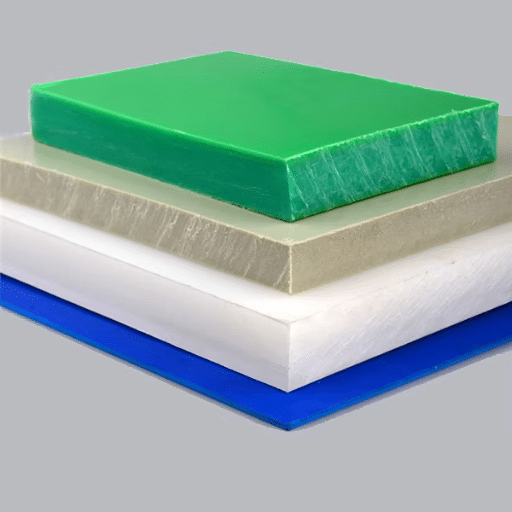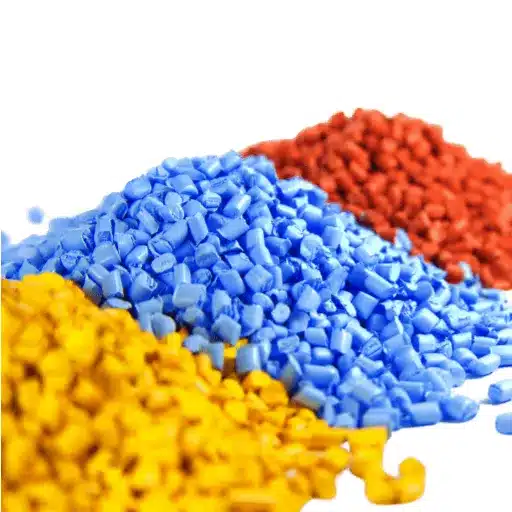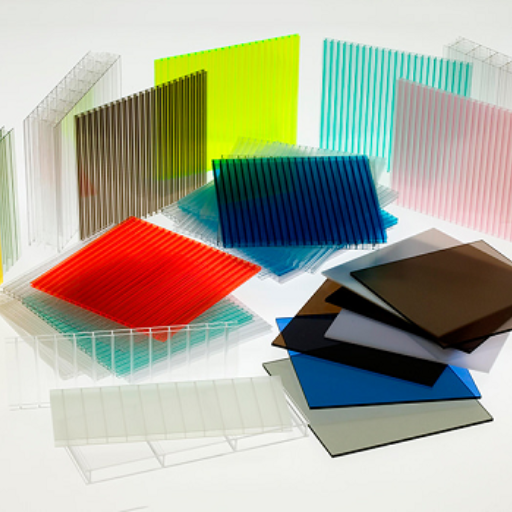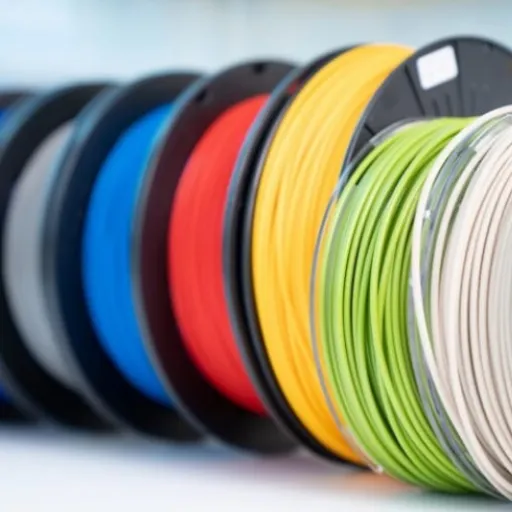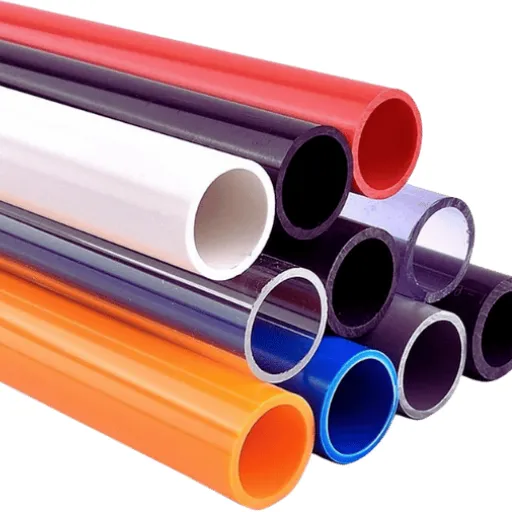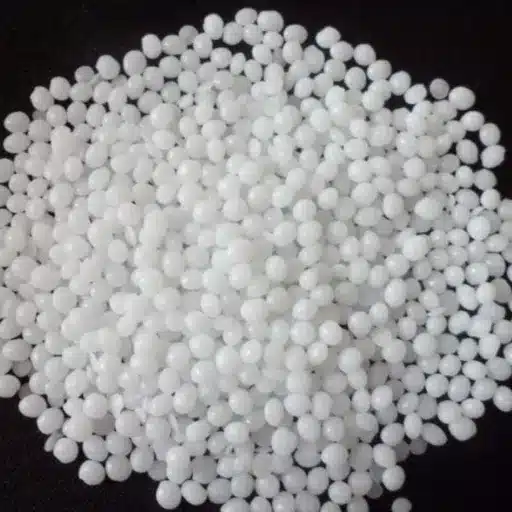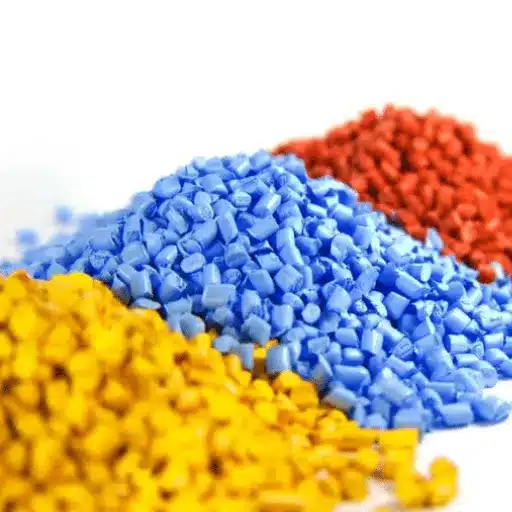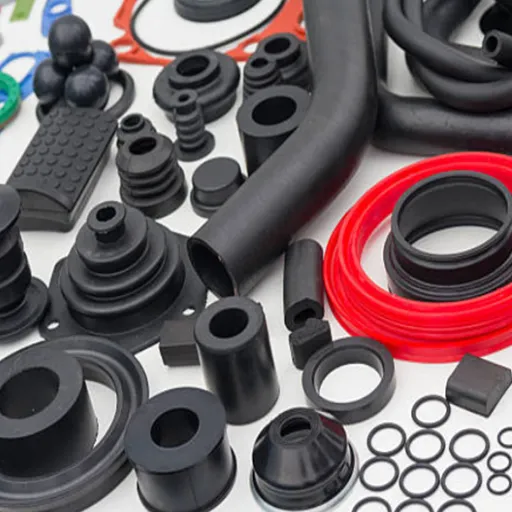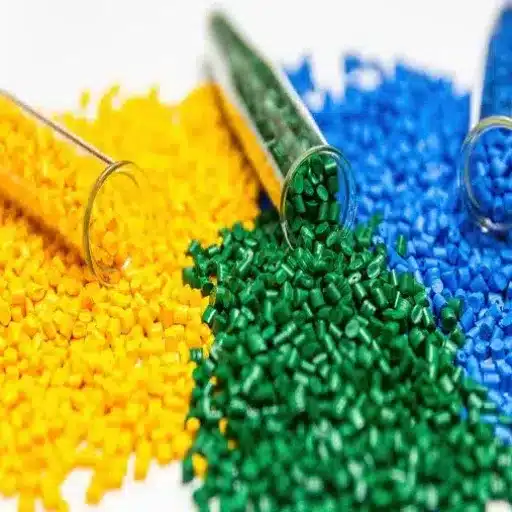Acrylonitrile-Butadiene-Styrene is a generic term for thermoplastics and, therefore, a superclass under which ABS is classified as a substrate for a variety of modern manufacturing techniques and product designs. ABS stands uniquely poised to interplay in the intersection of toughness, durability, and ease of processing, thereby affording extinction to a wide range of industries-from automotive to electronics to construction to consumer goods.
But what exactly makes ABS plastic so indispensable, and how do its properties lend themselves to the many applications? This article takes a thorough tour of ABS about composition, properties, and advantages, giving you a complete picture of how this material dominates engineering and product development. Whether you work in this field or are just curious about building blocks for everyday products, this guide will give you a well-rounded understanding of one of the most popular thermoplastics today.
Properties of ABS Plastic
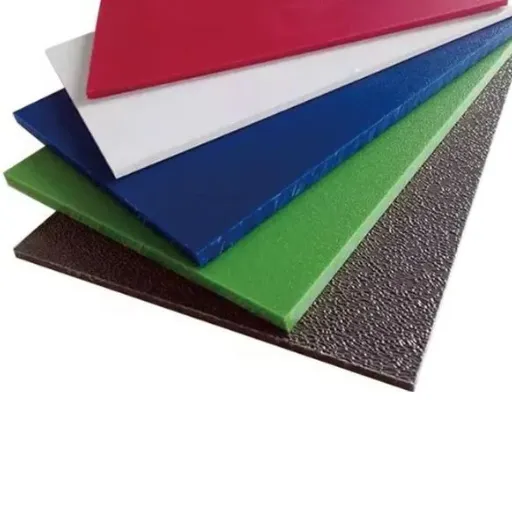
Strength and Durability of ABS
Acrylonitrile Butadiene Styrene or ABS is best known for its strength and durability, and is A highly cherished product in the realms of engineering and manufacturing. The inherent tough ABS does not yield to a lot of mechanical stresses without cracking or breaking. Such property is offered by the butadiene part, giving the material a high level of impact resistance even at low temperature conditions.
Key Strength Features:
- High impact resistance – Butadiene component provides excellent shock absorption
- Structural integrity – Acrylonitrile and styrene enhance rigidity
- Resistance to warping and deformation – Maintains shape under stress
- Excellent strength-to-weight ratio – Lightweight yet durable
- Temperature stability – Performs consistently across temperature ranges
This certainty qualifies the ABS to be highly dependable in the making of items that undergo severe wear and tear in day-to-day life, or under harsh environmental conditions. Despite its lightweight nature, however, ABS manifests an aided balance in strength-to-weight ratio that lends it application in automotive parts, consumer electronics, and industrial components where the life span of performance is of utmost importance.
Impact Resistance and Heat Resistance
The impact resistance property of ABS is extraordinary because the unique molecular arrangement comprises a paradoxical combination of rigidity and elasticity. The butadiene moiety present in the molecule gives ABS the capability of absorbing shock without fracturing.
Impact Resistance Applications
- Home appliances
- Automotive components
- Electronic devices
- Protective equipment
Heat Resistance Capabilities
- Operating temperature up to 221°F (105°C)
- 3D printing applications
- Electronic casings
- Automotive interiors
Heat resistance is another must-have for ABS, and the principal contributor is the acrylonitrile. ABS can hold structural stability to high temperatures generally up to 221°F or 105°C, depending on the grade. This property bestows ABS with the ability to operate successfully in environments in which there is often exposure to heat.
Material Properties of ABS Compared to Other Plastics
ABS plastic has better impact resistance, toughness, machinability, and resistance to chemicals as compared to other plastics-but has drawbacks like poor weatherability and being more expensive as opposed to an option like polystyrene.
| Attribute | ABS | Polystyrene | Polyethylene | PLA |
|---|---|---|---|---|
| Durability | High | Low | Moderate | Low |
| Strength | High | Low | High | Low |
| Workability | Easy | Moderate | Easy | Moderate |
| Resistance | Good | Poor | Excellent | Poor |
| UV Stability | Poor | Poor | Good | Moderate |
| Expense | Moderate | Low | Low | Moderate |
| Reusability | Yes | Yes | Yes | Yes |
| Thermal Tolerance | High | Low | Moderate | Low |
Common Applications of ABS

Use of ABS in the Automotive Industry
In addition to its ample durability, ABS offers tremendous impact resistance and ease of molding; that’s why the automotive industry extensively uses it. A communication list of common uses of ABS materials in the automotive sector has been provided below:
Interior Components
ABS is used for interior parts such as dashboards, trim panels, and pillar covers. The smooth surface finish, good aesthetics, and wear resistance are some traits these items made of ABS.
Exterior Parts
Mirror housings, fender trims, and grilles are some automotive exterior components that are made with ABS. The ABS ensures that impact and the environment will be resisted so the object survives well in time.
Safety Components
These ABS materials are incorporated into bumper systems because of their impact resistance and the ability to absorb a high quantity of energy under stress, which provides safety to the vehicle.
HVAC Systems
ABS is used for air vent bezels and HVAC system components because of its thermal tolerance and resistance to moisture, which keeps these systems operating reliably despite differing environmental conditions.
ABS in Electronics and Consumer Goods
With irreproachable mechanical properties, ease of processing, and cost-effectiveness, ABS is indeed widely utilized in the manufacturing of electronics and consumer goods. Five well-known uses of ABS in electronics and consumer goods are as follows:
- Consumer Electronics Casings: ABS serves as the foremost material for housings of electronic gadgets, such as mobile phones, laptops, and televisions. Its strength and scratch resistance offer protection to delicate electronic components while providing homeowners with an elegant finish.
- Keyboards and Peripheral Devices: Due to its durability and good resistance to wear caused by repeated use, ABS is used in the manufacture of keyboards, computer mice, and other peripherals. The smooth surface ensures comfort in prolonged operations.
- Household Appliances: Almost all domestic appliances employ ABS armed with external enclosures, such as vacuum cleaners, coffee machines, and refrigerators. Thermal stability and robustness are critical to ensure that it will perform when subjected to operational stress.
- Toys and Games: Being non-toxic and adaptable, ABS is well-suited for toys, which include popular building blocks, action figurines, and components for board games. It offers safety, intense colors, and durability to withstand repeated handling.
- Wearable Electronics: Wearable devices like fitness trackers, smartwatches, and headphones rely on ABS for structure. It is light enough to ensure comfort for the user while being impact and weather-resistant to guarantee long-term reliability.
Applications of ABS in Construction
ABS is popularly considered a modern-day construction chemical due to its flexibility in application, depending on factors such as strength, chemical resistance, and lightweight nature. Some of the key areas in construction where ABS finds major applications are:
- Piping Systems: ABS is used in all types of piping, chiefly in constructing drainage, stormwater, wastewater, and vent systems. ABS is non-toxic and has an excellent resistance to impact and chemicals, thus making it a great plumbing choice for both residential and commercial applications. Studies state ABS pipes withstand temperatures between -20°F to 140°F.
- Electrical Conduits: ABS electrical conduits are prized for being non-conductive and resisting corrosion. These conduits protect electrical wiring inside and outside the buildings for an extended period, are lightweight, and easy to install.
- Insulation Panels: ABS is widely used in insulation panels because of its thermal properties and resistance to moisture. ABS insulation panels contribute to the energy efficiency of buildings and offer a stiffening element to the structure.
- Wall and Flooring Materials: ABS is considered in both wall panels and flooring materials for applications where mechanical strength and beauty are required. It can be molded easily into a variety of textures and finishes for either functional or decorative purposes.
- Construction Tools and Accessories: ABS finds occasional use in tooling and accessory products like protective cases, brackets, and fittings for construction. It offers the hardness, moldability, and resistance to corrosive environmental agents that heavy-duty applications require.
Advantages and Disadvantages of ABS
Benefits of ABS Plastic: Molding and Affordability
Key Advantages of ABS Plastic:
- Molding Considerations: ABS plastic has a low melting point and shows optimal flow behavior during the molding process, facilitating efficient manufacture of complex configurations. ABS molding can diminish errors in production by up to 30%.
- Cost-Effectiveness: In comparison to other higher-performing thermoplastics, this polymer is considerably economical, making it well-suited for mass production in automotive, electronics, and construction.
- Recyclability: Making the plastic recyclable enhances cost-effectiveness in terms of life cycle analysis. About 80% of ABS waste can be reused at various levels of applications.
- Durability: Affordability does not hamper the resistance it has towards impact factors, allowing it to withstand physical forces in demanding environments.
- Additive Compatibility: ABS can be easily modified through the incorporation of fillers, stabilizers, or flame retardants, increasing its scope of application without much cost increase.
Disadvantages: Environmental Challenges and Limitations
Environmental and Technical Limitations:
- Non-Biodegradability: ABS plastic is not biodegradable and can persist in landfills or pollute oceans for hundreds of years. Environmental studies show that 11% of global solid waste is accounted for by plastics, with ABS being a considerable contributor.
- Fossil-Fuel-Based: ABS production is heavily reliant on petroleum and natural gas as raw materials, increasing the carbon footprint. Currently, around 4% of global oil production goes into feedstock for plastics annually.
- Energy-Intensive Processing: ABS manufacturing consumes immense quantities of energy, especially for polymerization and molding. ABS plastic production generates roughly 3.5 kg of CO2 equivalent emissions per kilogram produced.
- Limited Recycling Chances: Though technically recyclable, ABS plastics are hardly recycled due to logistical problems and contamination. The global recycling rate for ABS is still less than 10%.
- Thermal and Chemical Degradation: ABS can degrade under prolonged exposure to very high temperatures or harsh chemical environments, potentially releasing toxic fumes containing acrylonitrile and styrene.
Recyclability and Environmental Impact of ABS
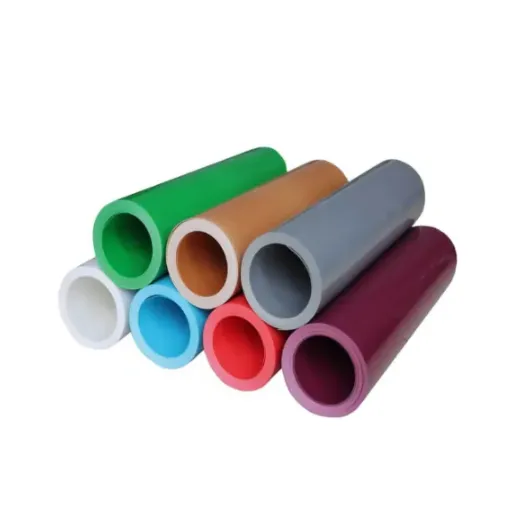
Recycling Processes for ABS Plastic
It’s possible to recycle ABS plastic by means of mechanical and chemical methods to ensure recovery and reuse while retaining performance:
- Mechanical Recycling: Includes cleaning the plastic, shredding, and melting the shredded plastic into granules or pellets that are later processed into new products. These methods require proper sorting to exclude impurities so that the properties of recycled ABS are maintained.
- Chemical Recycling: Involves breaking down polymer chains into their monomeric components via methods such as depolymerization or pyrolysis. These monomers can then be repolymerized into virgin ABS. While energy-intensive and costly, improvements in these technologies may improve their viability over time.
Environmental Considerations of ABS Usage
ABS plastics present both opportunities and challenges when viewed through an environmental lens. While ABS extends product life due to its durability, these same properties make ABS persist in the environment because it is not biodegradable.
The solutions lie in a combination approach that includes:
- Industry standards and legislation
- Advancements in recycling technology
- Closed-loop recycling systems
- Development of bio-based ABS alternatives
- Improved post-consumer sorting systems
Innovative Uses and Future Trends of ABS
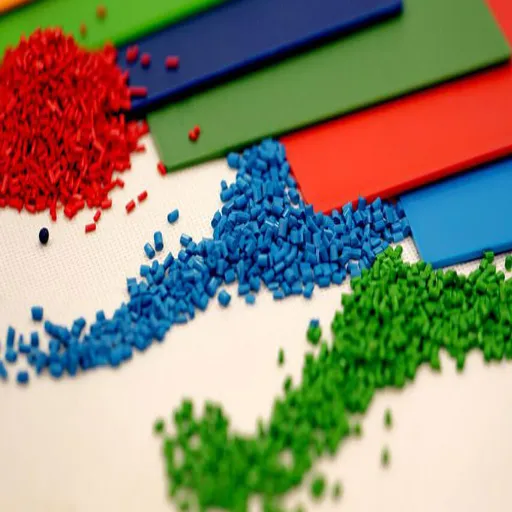
Emerging Applications of ABS in Material Science
3D Printing Filaments
Widely used in additive manufacturing for strength, versatility, and thermal resistance. ABS materials account for nearly 26% of 3D printing materials, suitable for prototypes, mechanical parts, and consumer products.
Electronics and Smart Devices
ABS offers good insulating properties and resistance to impacts, making it ideal for electronic casings and smart device housings, protecting vulnerable internal components.
Automotive Lightweighting
Used for various interior and exterior vehicle components where weight reduction is important alongside strength. ABS components result in at least 5% fuel efficiency gain compared to conventional materials.
Medical Applications
Being adopted in the medical field due to its beneficial biocompatibility and ease of sterilization. Used for medical devices like inhalers, drug delivery systems, and diagnostic equipment.
Sustainable Construction
Being explored as a sustainable modular construction material. Experiments show ABS in construction elements provides weight reduction without compromising structural integrity.
Future Trends in ABS Development
Acrylonitrile Butadiene Styrene development faces dramatic innovations, driven by demands for sustainability, enhanced performance, and application variances:
- Recycled Materials Integration: Manufacturers are exploring ways of incorporating post-consumer plastic waste into ABS resins without diminishing material properties.
- Additive Manufacturing Improvements: Investigations to modify ABS compositions to enhance printability, lower warping tendency, and broaden compatibility for higher-temperature applications.
- Bio-Based ABS Development: Development of bio-ABS from renewable sources such as plant-based polymers to promote carbon neutrality.
- Nanocomposites and Advanced Blends: ABS blends with graphene or carbon nanotubes may create ultralight and super-strong materials for futuristic applications.
- Enhanced Performance Grades: New grades with better thermal resistance, flame retardancy, and impact properties for increasingly stringent industry standards.
Frequently Asked Questions (FAQ)
A: Acrylonitrile butadiene styrene, or commonly known as ABS, is an elegant polysynthetic thermoplastic polymer. It is a terpolymer produced by polymerizing styrene and acrylonitrile in the presence of polybutadiene, lending much impact resistance and strength.
A: The key properties include high impact resistance, good electrical insulation, and excellent surface finish. Its strength and durability make ABS an ideal material for applications ranging from household items to engineering parts.
A: ABS plastics are used for manufacturing items such as plastic musical instruments, automotive parts, and consumer electronics. It’s chosen for parts requiring high durability and impact resistance under demanding conditions.
A: Yes, ABS can be recycled. ABS can be recycled into new ABS parts, reducing waste and resource utilization, making it an eco-friendly option.
A: Different grades of ABS exist, each varying in its application. These grades differ in impact resistance, surface finish, and processing ease, allowing manufacturers to select the best-suited type for their needs.
A: ABS is stronger than pure polystyrene and provides a better balance of toughness with rigidity compared to other plastics. Its ability to withstand high-impact forces makes it ideal for applications where durability is important.
A: ABS is used for manufacturing various medical devices and components because of its favorable electrical properties and biocompatibility. It’s preferred in medical applications for its strength and reliability.
A: ABS is popular in 3D printing due to its good mechanical properties and moldability. It offers strong adhesion and good layer bonding characteristics to create durable, high-quality parts from various designs.
A: ABS products include toys, kitchen appliances, and electronic housings. The wide range of applications testifies to this plastic material’s usefulness in both consumer and industrial fields.
A: Styrene gives acrylonitrile butadiene styrene its thermoplastic characteristics for strength and processing capability. The presence of styrene in combination with acrylonitrile enhances the overall performance of ABS in various applications.
References
- Plating on acrylonitrile–butadiene–styrene (ABS) Plastic: A Review – Published by Springer, reviews the properties and applications of ABS plastic.
- Recycling of Acrylonitrile Butadiene Styrene (ABS): A Review – Published by Springer, discusses the recycling processes for ABS and associated challenges.
- Thermal Analysis of an Acrylonitrile-Butadiene-Styrene/SWNT Composite – Published by ScienceDirect, explores the thermal properties of ABS composites.






